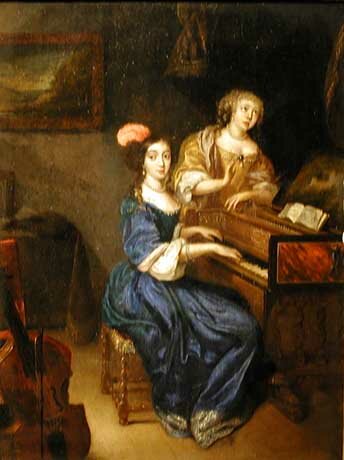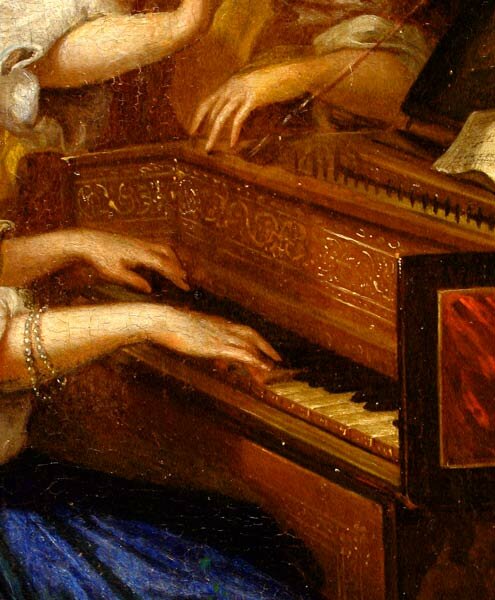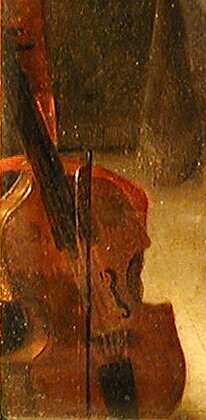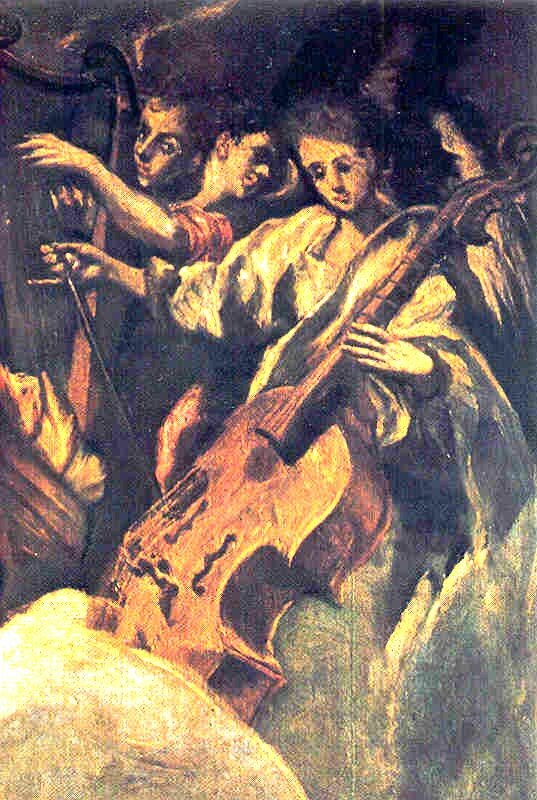Oil painting
Rogier de la Haye or his pupil, Caspar Netscher
Holland, Middle of the 17th C.
Scene of domestic music-making
Catalog 142 – Painting by Caspar Netscher or Rogier de la Haye

Experts have attributed this charming musical scene, an oil painting on a panel of wood, to both Rogier de la Haye and to his pupil, Caspar Netscher. Two handsomely attired young ladies are engaged in music-making, one at the harpsichord, the other singing and apparently also gesticulating with her eyes, her head and both of her hands, in order to theatrically portray the text, something quite usual in the Baroque. The harpsichordist, however, seems to be more interested in the viola da gamba in the foreground: she languidly casts here eyes towards that instrument, which is leaning in an upright position on a chair, with its bow intertwined among the strings, ready to play, so to speak.
The insinuation is that the harpsichordist, the central figure of the painting, is apparently anxiously expecting her suitor to appear at any moment to join in the act of music-making, or perhaps even more. The painter has masterfully portrayed the inner thoughts of this young soul with the turn of the torso, neck and head, the yearning look on her face and the poised wrists and fingers nimbly caressing the keyboard.
The strong diagonal arising from the viol to her longing eyes, on to the eyes of the singer, to then disappear in the darkness of the upper right hand corner dynamically draws the spectator into the painting, as do the other diagonals constructed by the legs of the chair and the tressle of the harpsichord, both pointing towards the table in the background, on the one hand, and the horizontal lines of the keyboard pointing towards the landscape painting, perhaps a Ruysdael, on the upper left corner of the scene, on the other.

The instruments portrayed are of themselves highly significant. The harpsichord can be easily identified as a magnificent Flemish instrument from Antwerp. The painted red-marble surface within a dark frame and the decorative motifs on printed paper above the keyboard and on the lateral cheeks are typical of the Antwerp workshops of the Ruckers Tradition, as well as the ivory lower and ebony or stained wood upper keys of the keyboard.
 |
 |
The viola da gamba is most likely of Italian provenance, although it could be Spanish, as well: paintings with this exact type of viol are known from, among others, paintings by El Greco and Velázquez. And it was in this period in history, that the Spanish Armies honoured the Low Countries with their presence: Velazquez painted them, as well!
The viol on the right, from a painting by El Greco, shows identical sound holes, also a similar general outline with corners and the frame lining between the ribs and the top and bottom of the body, very much as in our painting.